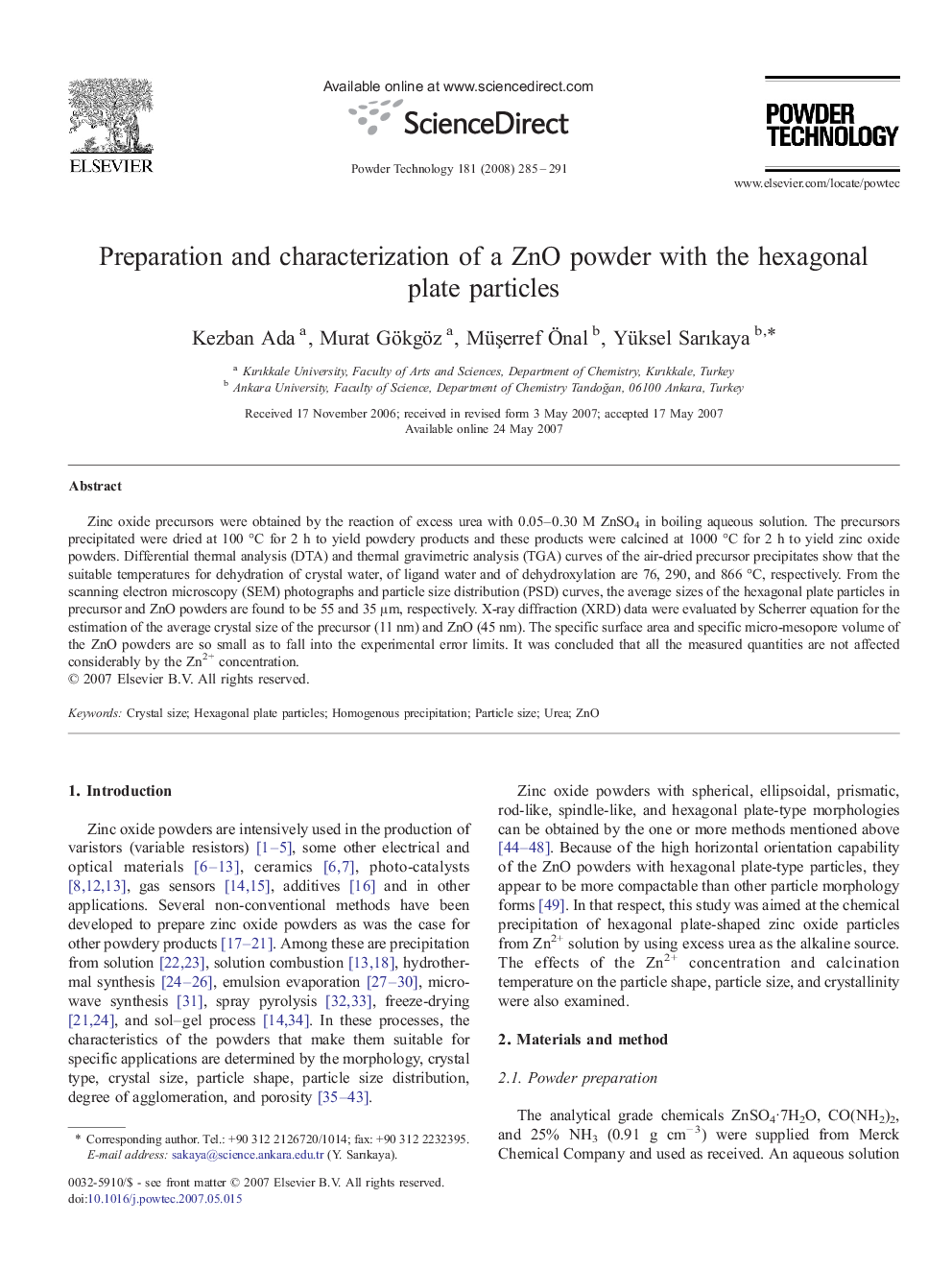| کد مقاله | کد نشریه | سال انتشار | مقاله انگلیسی | نسخه تمام متن |
|---|---|---|---|---|
| 239242 | 465807 | 2008 | 7 صفحه PDF | دانلود رایگان |

Zinc oxide precursors were obtained by the reaction of excess urea with 0.05–0.30 M ZnSO4 in boiling aqueous solution. The precursors precipitated were dried at 100 °C for 2 h to yield powdery products and these products were calcined at 1000 °C for 2 h to yield zinc oxide powders. Differential thermal analysis (DTA) and thermal gravimetric analysis (TGA) curves of the air-dried precursor precipitates show that the suitable temperatures for dehydration of crystal water, of ligand water and of dehydroxylation are 76, 290, and 866 °C, respectively. From the scanning electron microscopy (SEM) photographs and particle size distribution (PSD) curves, the average sizes of the hexagonal plate particles in precursor and ZnO powders are found to be 55 and 35 μm, respectively. X-ray diffraction (XRD) data were evaluated by Scherrer equation for the estimation of the average crystal size of the precursor (11 nm) and ZnO (45 nm). The specific surface area and specific micro-mesopore volume of the ZnO powders are so small as to fall into the experimental error limits. It was concluded that all the measured quantities are not affected considerably by the Zn2+ concentration.
ZnO precursors were obtained by the reaction between excess urea and 0.05–0.30 M Zn2+ in boiling aqueous solution. The precursors were calcined at 1000 °C for 2 h to yield ZnO powders. The XRD patterns of a ZnO precursor and its powder are given in the figure. The average sizes of the hexagonal plate particles in the precursor and ZnO powders are determined as 55 and 35 μm, respectively. The average crystal size of the precursor and ZnO powders is 11 and 45 nm, respectively, from the X-ray diffraction (XRD) data by using the Scherrer equation.Figure optionsDownload as PowerPoint slide
Journal: Powder Technology - Volume 181, Issue 3, 12 February 2008, Pages 285–291